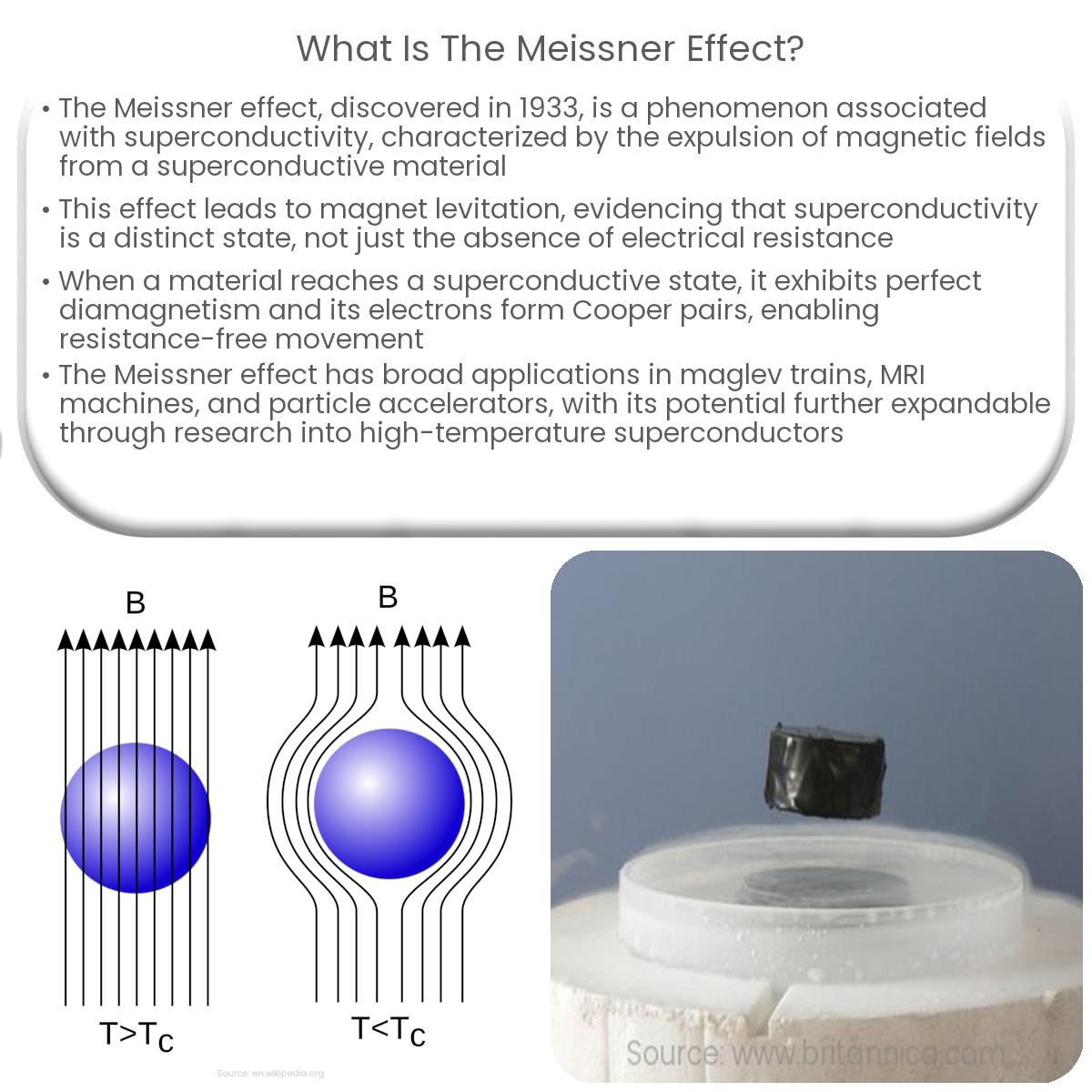The Meissner effect occurs when a superconductor expels magnetic fields, exhibiting perfect diamagnetism, which results in levitation of magnets.
The Meissner Effect
The Meissner effect is a fascinating phenomenon associated with superconductivity. When a material becomes superconductive, it exhibits perfect diamagnetism, expelling magnetic fields from its interior. This expulsion of magnetic fields results in the levitation of a magnet above a superconductive material, which is the hallmark of the Meissner effect.
Discovery and Significance
Discovered in 1933 by German physicists Walther Meissner and Robert Ochsenfeld, the Meissner effect provided essential insight into the nature of superconductivity. It demonstrated that superconductivity is a distinct state, separate from ordinary conductivity, and that it involves more than just the absence of electrical resistance.
Understanding the Meissner Effect
When a superconducting material is cooled below its critical temperature, it transitions into a superconductive state. In this state, the material’s electrons form pairs, known as Cooper pairs, which can move through the material without any resistance. Simultaneously, the material exhibits perfect diamagnetism, meaning it repels magnetic fields.
This repulsion causes the magnetic field lines to curve around the superconductor, creating a surface current that exactly cancels the external magnetic field within the material. As a result, the magnetic field is effectively expelled from the superconductor, and the Meissner effect takes place.
Applications of the Meissner Effect
The Meissner effect has various applications in the fields of science and technology. Some notable examples include:
- Maglev Trains: Magnetic levitation (maglev) trains employ the Meissner effect to float above the tracks, reducing friction and enabling high-speed transportation.
- MRI Machines: Magnetic resonance imaging (MRI) machines use superconducting magnets to generate strong magnetic fields. The Meissner effect helps maintain a stable and homogeneous magnetic field.
- Particle Accelerators: The Meissner effect allows for the use of superconducting materials in particle accelerators, where they provide strong, stable magnetic fields required for guiding charged particles.
Despite these exciting applications, the Meissner effect is currently limited by the need for extremely low temperatures to achieve superconductivity. However, ongoing research into high-temperature superconductors could unlock even more potential applications in the future.


